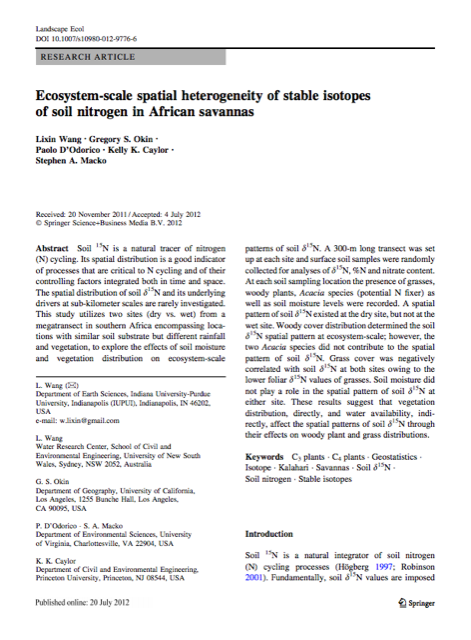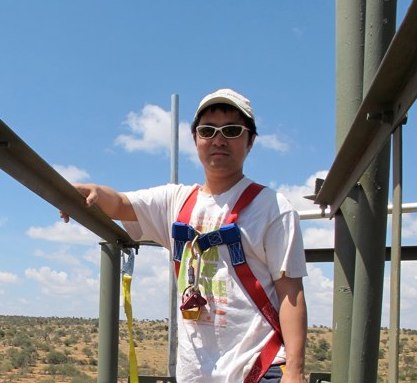Ecosystem-scale spatial heterogeneity of stable isotopes of soil nitrogen in African savannas

Wang L., Okin G.S., D’Odorico P., Caylor K.K., Macko S.A., “Ecosystem-scale spatial heterogeneity of stable isotopes of soil nitrogen in African savannas”, Landsc. Ecol., 28 (2013), pp. 685–698, doi:10.1007/s10980-012-9776-6.
Soil 15 N is a natural tracer of nitrogen (N) cycling. Its spatial distribution is a good indicator of processes that are critical to N cycling and of their controlling factors integrated both in time and space. The spatial distribution of soil d15 N and its underlying drivers at sub-kilometer scales are rarely investigated. This study utilizes two sites (dry vs. wet) from a megatransect in southern Africa encompassing locations with similar soil substrate but different rainfall and vegetation, to explore the effects of soil moisture and vegetation distribution on ecosystem-scale patterns of soil d15 N. A 300-m long transect was set up at each site and surface soil samples were randomlycollected for analyses of d15 N,%N and nitrate content. At each soil sampling location the presence of grasses, woody plants, Acacia species (potential N fixer) as well as soil moisture levels were recorded. A spatial pattern of soil d15 N existed at the dry site, but not at the wet site. Woody cover distribution determined the soil d15 N spatial pattern at ecosystem-scale; however, the two Acacia species did not contribute to the spatial pattern of soil d15 N. Grass cover was negatively correlated with soil d15 N at both sites owing to the lower foliar d15 N values of grasses. Soil moisture did not play a role in the spatial pattern of soil d15 N at either site. These results suggest that vegetation distribution, directly, and water availability, indirectly, affect the spatial patterns of soil d15 N through their effects on woody plant and grass distributions.
